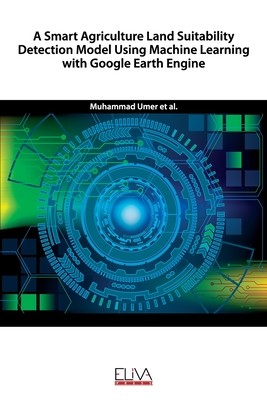| A Smart Agriculture Land Suitability Detection Model Using Machine Learning with Google Earth Engine Contributor(s): Amir Latif, M. (Author), Farhan, Muhammad (Author), Jhanjhi, Noor Zaman (Author) |
|
 |
ISBN: 1636480128 ISBN-13: 9781636480121 Publisher: Eliva Press OUR PRICE: $51.78 Product Type: Paperback Published: October 2020 |
| Additional Information |
| BISAC Categories: - Computers |
| Physical Information: 0.31" H x 5.98" W x 9.02" (0.44 lbs) 144 pages |
| Descriptions, Reviews, Etc. |
| Publisher Description: The development and growth of plants and crops heavily depend on the number of mineral nutrients and their concentrations available in the soil, moisture in the soil, air quality and water availability. Plants or crops sometimes face challenges in obtaining a sufficient amount of nutrients for the necessary cellular process from the soil due to immobility. The decrease in crops' growth, fertility, or poor food quality happens due to deficiency of natural nutrients, soil moisture, and water, which is required to meet the demand of plants' necessary cellular processes. Lack of nutrients in the soil may result in biodiversity reduction, which directly affects most food webs. This proposed research study will focus on the development of the agriculture land assessment model. Google Earth Engine is a publicly available data repository that hosts an enormous variety of datasets, including climate and weather forecasts, landcover, environmental variables, non-optical and optical wavelengths, water history and classification, and air quality. Precise high spatial resolution cropland extent product up to 60m resolution of very large or even of a specific region of any country is considered very important in addressing several challenges of water security and global food. Cropland products typically cover limited or broad farm areas that are critical for developing specific, higher-level cropland products such as crop irrigation, crop water production, crop intensities, and crop varieties methods. The processing by constructing precision-high resolution cropland-wide training and testing data on diverse geographical locations and safe frontiers, computing capacity, and the management of vast volumes of geographical data are all called challenges. A high-resolution cropland product derived from Sentinel-2 Multispectral (Level-1C) data for different characteristics of Pakistan was produced for the analysis. In this analysis, eight separate Sentinel-2 multi-spectral instruments (level-1C) data from 2018-19 (SWIR 2, SWIR 1, Cirrus, NIR, Red, Green, Blue, and Aerosols) have been used. The pixel-based classification algorithms have been used, and their precision is measured and seen in this study; both computations and analyzes have been conducted. |